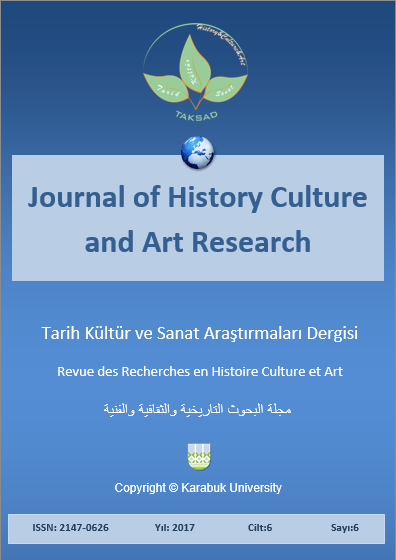Tatar Virtual Institute of Kayum Nasyri
DOI:
https://doi.org/10.7596/taksad.v6i6.1334Keywords:
Virtual Institute, Tatars, Tatar diaspora, Tatar language, Preservation and development of languages.Abstract
The article is devoted to the study of structure and activity of the network of centers of Tatar virtual Institute of Kayum Nasyri, created on the basis of Institute of Philology and Intercultural Communication after Leo Tolstoy of Kazan Federal University. The aim of the Institute of Kayum Nasyri is the desire to become a world brand in its field. In this context, the Institute relies on the experience of such world-known educational centers as the British Council, the Institute named after Goethe, Cervantes Institute, Confucius Institute and Institute by Yunus Emre. The Institute's activities are associated with the development of collaboration in the field of education, support, promotion and development of the Tatar language and culture in the regions of the Russian Federation, countries of near and far abroad. There are 7 educational-cultural centers in the Institute at this moment. Each center is supplied with educational, informative literature and fiction, as well as the video-conferencing system for training, conferences and events online. The Institute of Kayum Nasyri is named after the famous Tatar educator. As a fervent supporter of friendship between Russian and Tatar people, he was the first of the educators to acquaintance the Tatars with the Russian history and culture in their native language, translated into the Tatar language many textbooks on geography, physics, mathematics, etc. Kayum Nasyri at the time, made the Russian-Tatar dictionary, was the author of a textbook of Russian grammar for the Tatars, as well as of the significant works in the field of the Tatar linguistics.
References
Abdul-Kayum (1904). Full Russian-Tatar dictionary. URL: http: //www.tatknigafund.ru/books/1534 that 15.02.2016.
Barbour, M. K. & Reeves, T. S. (2009). The reality of virtual schools: a review of the literature. Computers and Education, 52 (2), 402-416.
Boyacioglu, F. & Erdag, S. (2013). Mevlana Celaleddin Rumi ve la Fontaine’de höşgörü algısı. Turkish Studies, 8(8), 325-340.
Çağatay, S. (1952). Abd-ül-Kayyum Nasıri. Ankara Üniversitesi Dil ve Tarih-Coğrafya Fakültesi Dergisi, 10(3-4), 147-160. URL: http://dergiler.ankara.edu.tr/dergiler/26/993/12095.pdf
Demian, P. & Morrice, J. (2012). The use of virtual learning environments and their impact on academic performance. Engineering Education, 7(1), 11-19.
Edikhanov, I. (2014). The Principles of Translation of the Tatar Enlightening Literature into the Russian Language. SGEM2014 Conference Proceedings, 1, 253-258.
Gayol, Y. (1999). The study of the quality of educational design of international virtual programs graduates: a new model of assessment. The Pennsylvania state University.
Hanna, D. E. & Lachema, S. (2002). Beyond national borders: transforming higher education. Journal of studies in international education, 6(2), 115-133.
Khusnutdinov, P. R. (2015). The Institute of Kayum Nasyri activity in the development of international cultural relations. In the world of scientific discoveries. Krasnoyarsk: research and innovation centre, 5(65), 417-422
Zhouying, J. (1999). Organizational innovation and virtual institutes. Journal of Knowledge Management, 3(1), 75-83.
Downloads
Published
How to Cite
Issue
Section
License
All papers licensed under Creative Commons 4.0 CC-BY.- Share — copy and redistribute the material in any medium or format
- Adapt — remix, transform, and build upon the material for any purpose, even commercially.
Under the following terms:
Attribution — You must give appropriate credit, provide a link to the license, and indicate if changes were made. You may do so in any reasonable manner, but not in any way that suggests the licensor endorses you or your use.
- No additional restrictions — You may not apply legal terms or technological measures that legally restrict others from doing anything the license permits.







